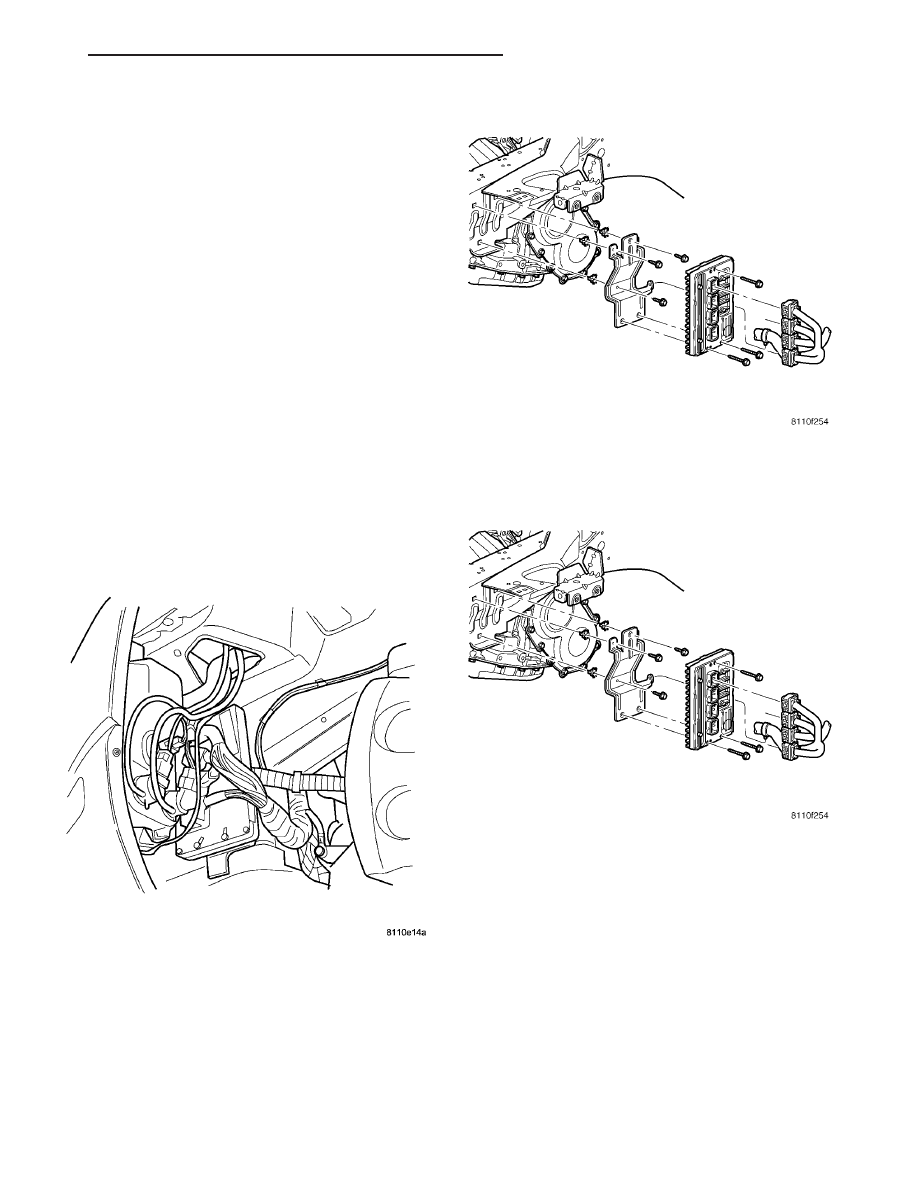Chrysler Pacifica. Manual - part 482

• Clutch Plate and/or Seal Replacement
• Valve Body Replacement or Recondition
To perform the Quick Learn Procedure, the follow-
ing conditions must be met:
• The brakes must be applied
• The engine speed must be above 500 rpm
• The throttle angle (TPS) must be less than 3
degrees
• The shift lever position must stay until
prompted to shift to overdrive
• The shift lever position must stay in overdrive
after the Shift to Overdrive prompt until the
DRBIII
t indicates the procedure is complete
• The calculated oil temperature must be above
60° and below 200°
(1) Plug the DRBIII
t scan tool into the diagnostic
connector. The connector is located under the instru-
ment panel.
(2) Go to the Transmission screen.
(3) Go to the Miscellaneous screen.
(4) Select Quick Learn Procedure. Follow the
instructions of the DRBIII
t to perform the Quick
Learn Procedure.
REMOVAL
(1) Disconnect the negative battery cable.
(2) Raise vehicle and support.
(3) Remove the left front wheel.
(4) Remove the left front splash shield.
(5) Unlock and remove the 4 connectors (Fig. 17).
(6) Remove the 3 mounting screws (Fig. 18).
(7) Remove the PCM.
INSTALLATION
(1) Install the PCM.
(2) Install the 3 mounting screws (Fig. 19).
(3) Tighten screws.
NOTE: The PCM connectors are color coded.
Fig. 17 PCM LOCATION
Fig. 18 PCM ASSEMBLY
Fig. 19 PCM ASSEMBLY
CS
ELECTRONIC CONTROL MODULES
8E - 15
POWERTRAIN CONTROL MODULE (Continued)